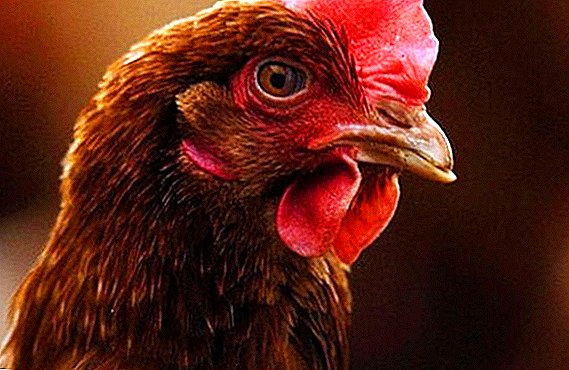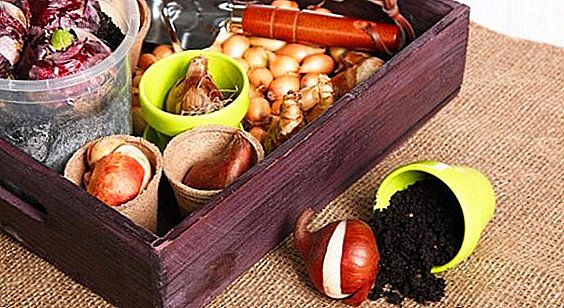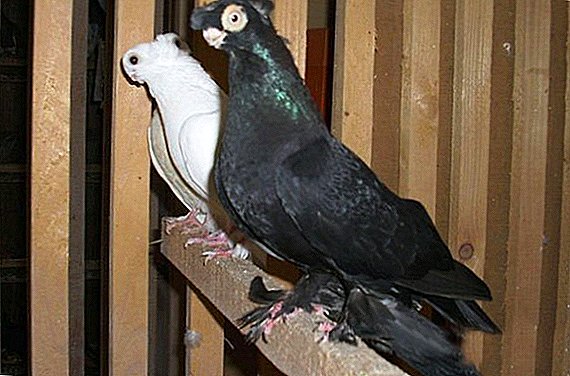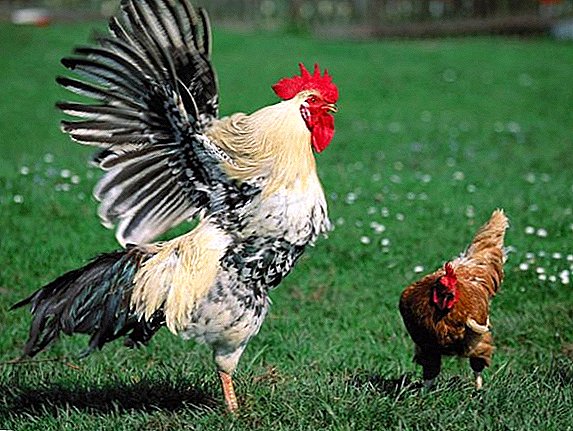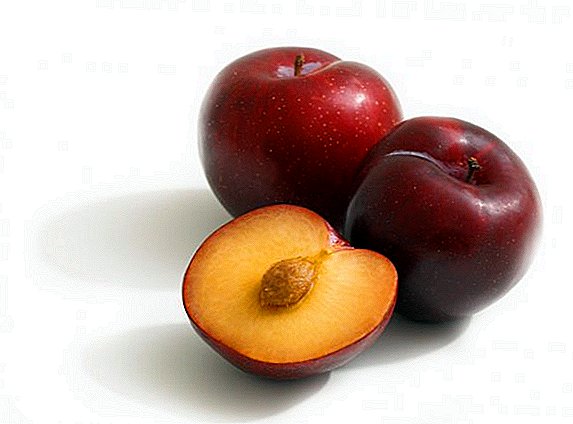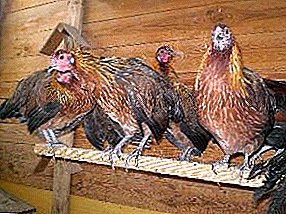
Have you ever tried for breakfast scrambled eggs or scrambled eggs from fresh, still warm chicken eggs? Or a soft homemade chicken fillet for dinner? The taste is awesome! How - no? Even when the rooster crowed, they never woke up? Then you definitely should have chickens! What about the Rhine breed?
This German breed of chickens was given this name in honor of the large West European Rhine River. The breed originated in the late XIX century, thanks to Dr. Hans-Rudolf von Langen, who was engaged in animal breeding. The doctor crossed Italian chickens with birds from the Eifel mountain range in Germany.
Chickens were named Rhinelander (English Rhine - Rhine, land - land) In 1908, new Hans-Rudolph chickens won the first German egg-laying competition. The chicken laid a white egg weighing 55 grams.
Breed description Rhine
Color options are quite varied:
- the black;
- white;
- brown;
- blue;
- partridge;
- Colombian;
- spotted black and blue.
 Body shape is specific, they have a wide back, massive body and strong chest. In addition, German chickens are unusual, characteristic only for this breed of chickens crest. Also, the breed has small white ear lobes. Carry white eggs. Rhenish chickens are birds of meat and egg type, combining a strong build and low weight.
Body shape is specific, they have a wide back, massive body and strong chest. In addition, German chickens are unusual, characteristic only for this breed of chickens crest. Also, the breed has small white ear lobes. Carry white eggs. Rhenish chickens are birds of meat and egg type, combining a strong build and low weight.
If you are new to breeding chickens, we explain: these birds have their own classification and are divided into three types.
Light (egg) type of chickens is perfect for egg lovers for breakfast, but you will not allow such a bird for meat - it will be too small. "Light" chickens do weigh less than other chickens (sometimes even 2 times), reach sexual age much earlier and their egg production is higher.
Heavy (meat) chickens are specially bred for meat, eggs in large quantities, it is not required to carry. The plumage of such birds is loose, they are characterized by a large live weight and the tendency of the birds to incubate.
Birds are medium heavy, meat and egg type.: this is the golden mean; birds that are well carried, and their meat is wonderful.
Features
 By undeniable advantages, we can safely count them as unpretentious. This breed of chickens does not require special care, have good health and resistance to changing weather conditions. They can even eat pasture without significant harm to their bird health.
By undeniable advantages, we can safely count them as unpretentious. This breed of chickens does not require special care, have good health and resistance to changing weather conditions. They can even eat pasture without significant harm to their bird health.
These chickens are gullible creatures, they will quickly get used to the host. and will not scatter in different directions as soon as you enter the chicken coop. This makes things much easier, isn't it?
We all know the stereotype of the Germans, they say, people are harsh, dry, prim, will not make unnecessary movement. But German birds, unlike people, are characterized by unprecedented vigor and resistance to stress. Therefore, you will never have doubts whether your birds are sick or just decided to mourn. Rhenish chickens stop their legwork only at the time of sleep or because of a serious illness.
Also, the peculiarities of this breed include the fact that the Rhenish hen, like many other pedigree chickens, has lost the incubation instinct. German chickens can safely leave their cozy nest, which distinguishes them from hens, which can only be driven from their place by force.
Specifications
- Egg mass ranges from 55 to 60 g.
- Egg production an average of 180 eggs per year.
- The size of the ring for a rooster is 18 mm, and for a chicken it is 20 mm.
- Rooster weight is about 2.75 kg.
- The chicken is not much lighter than a rooster, its weight is 2.5 kg.
- Both chicken and rooster have 4 fingers on each paw.
- able to make flights over very short distances, the height of their flight - just 1 meter.
Content and cultivation
 Being in an open-air cage on a personal plot or on a farm, meat and egg chickens products are much tastier and more qualitative than those of chickens that are kept in large enterprises.
Being in an open-air cage on a personal plot or on a farm, meat and egg chickens products are much tastier and more qualitative than those of chickens that are kept in large enterprises.
Chicken dung is an excellent fertilizer for all crops without exception. Unlike meat and egg breeds may stop rushing with insufficient feed, but as soon as feeding begins to arrange the organism of birds, they will continue active egg-laying.
When keeping chickens, the first thing to do is prepare a house for them. This is a room in which chickens can hide from both cold and drought. The success of breeding birds and their egg productivity depend on the proper arrangement of the house.
Meat-egg breeds of chickens are often called general users because of their universal properties. In terms of productivity, meat and egg birds differ from both laying hens and meat-type chickens, taking the best they have from each profile.
Analogs
Rhine hens are like Italian partridge (known as brown and brown leggorni) the color of the plumage and the appearance as a whole. Their main difference is that the Italian chickens belong to the birds of an egg orientation, while the Rhine ones do not belong to this type.
In addition, these breeds are similar in terms of their own weight, egg mass and egg production.
Well, and, of course, it is foolish to disagree that the Rhenish chickens will inevitably have similarities with breeds of meat and egg type. For example, medium-heavy chickens of the black Australorp breed also carry 180-200 eggs per year weighing not more than 58 g.
 The whimsical chickens Gudan are not only beautiful, but also fruitful. They can be bred even for meat.
The whimsical chickens Gudan are not only beautiful, but also fruitful. They can be bred even for meat.Did you know that a bath can be built from foam blocks? Here are all the details.
Let's sum up
Rhenish chickens are suitable for breeders who want to get meat and eggs in moderation from chickens. Advantages of chickens: gullibility, unpretentiousness, energy. A negative trait of their character is excessive pugnacity. The plumage has a wide range of colors, and you can always find the desired color among the birds of this breed.
According to the characteristics there are no pronounced pros and cons: everything is distributed equally. Rhenish chickens - the golden mean breeds.


